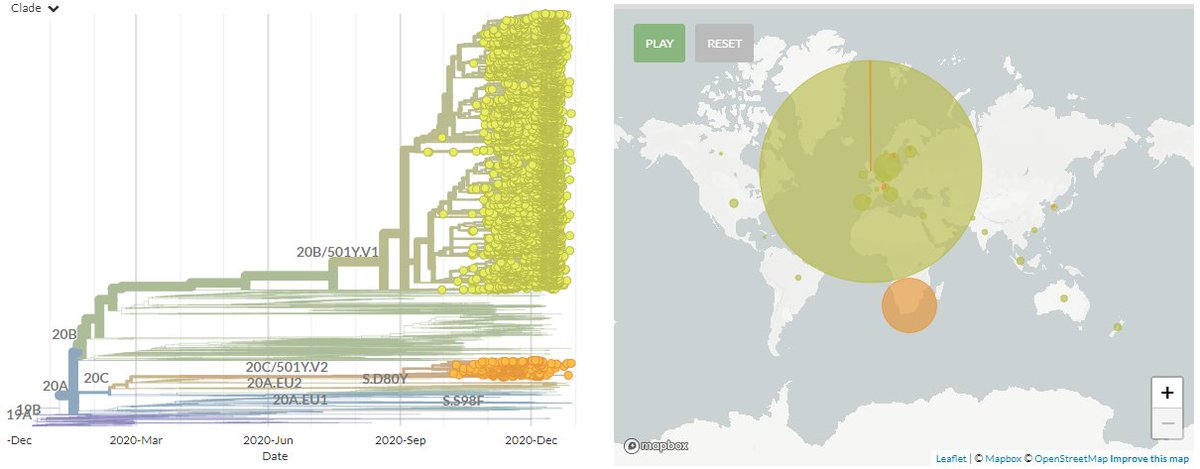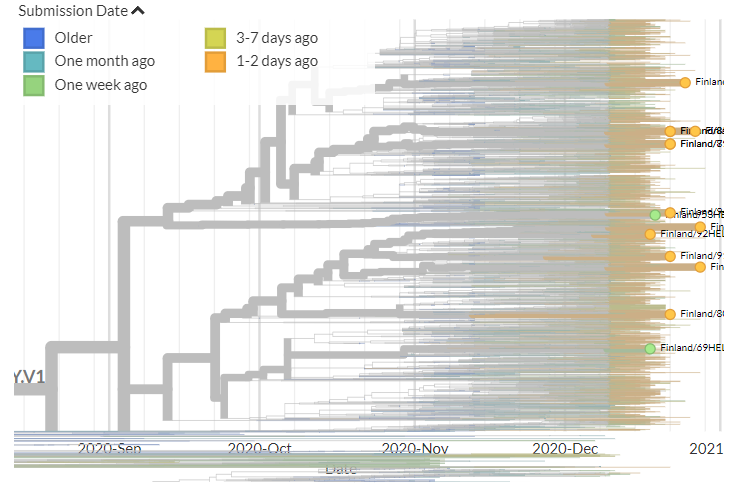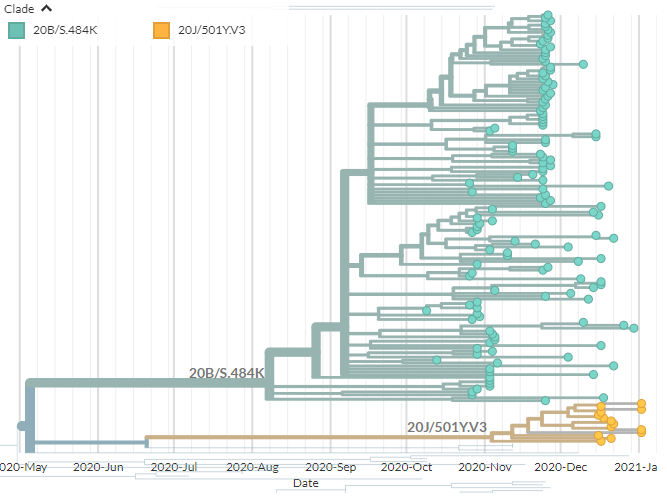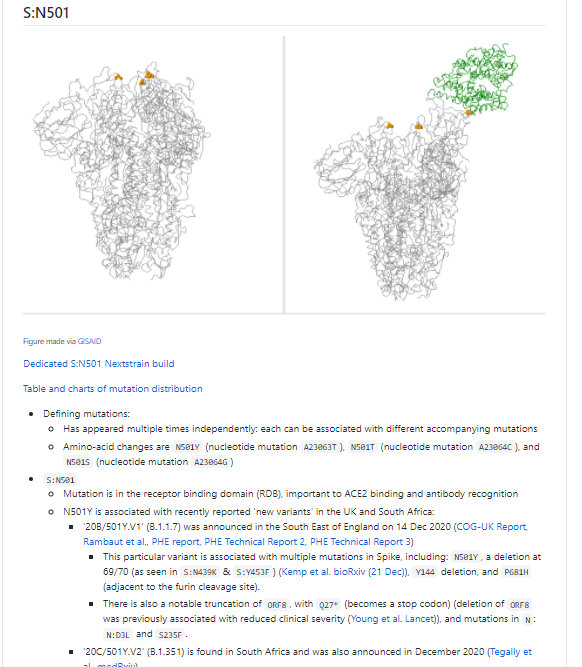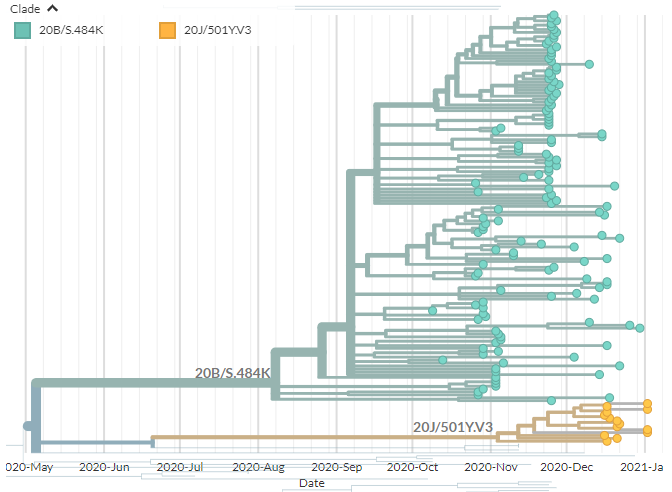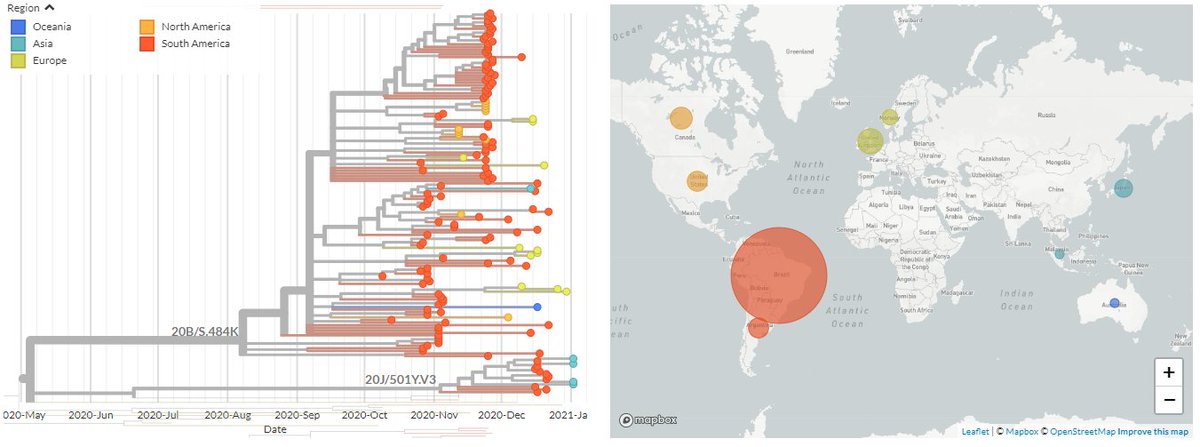The focal S:N501 build is now updated with data from 13 Jan!
There are a total of 247 non-UK & non-South African sequences in 501Y.V1 (B.1.1.7 #b117) & 501Y.V2.
I'll do an additional thread later on, covering S:E484 & the 'Ohio variants'.
1/18
https://t.co/3bdttjKVl4
There are 244 new sequences in 501Y.V1 (B.1.1.7) from Australia, Belgium, Denmark, Germany, India, Israel, Italy, Netherlands, New Zealand, Norway, Portugal, Singapore, Spain & USA, as well sequences as from Ecuador and Greece for the first time.
2/18
Greece has 3 new sequences in 501Y.V1 for the first time. They indicate 2 separate introductions.
Ecuador has 2 sequences for the first time. They also indicate 2 separate introductions.
3/18
The USA has 61 new sequences (orange), from Florida, Minnesota, California, Pennsylvania, & New York.
A few of these represent separate introductions. Others form distinct clusters that may indicate ongoing local transmission.
4/18
Israel has 35 new sequences (orange). Some of these show separate introductions, but many link with older sequences, indicating ongoing local transmission.
5/18

